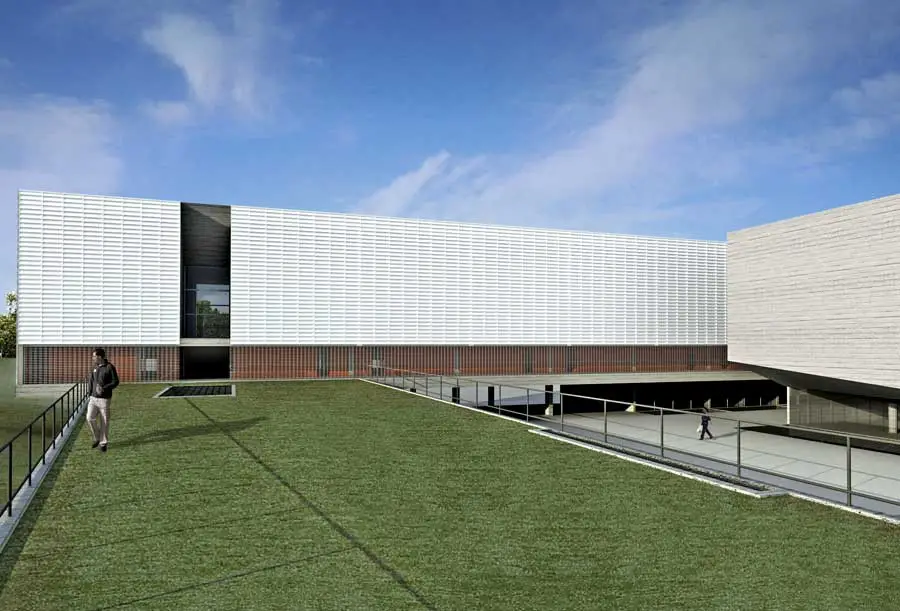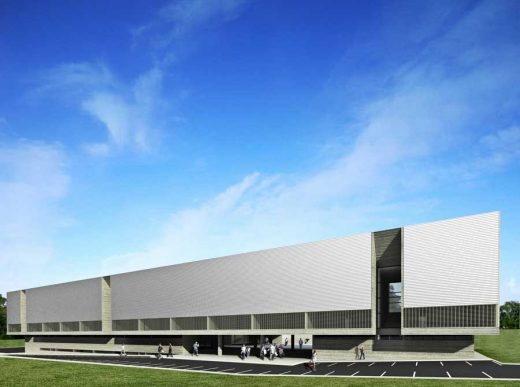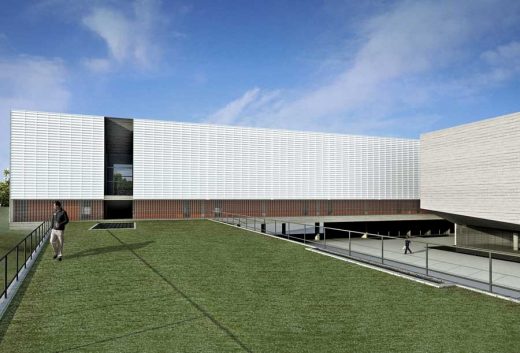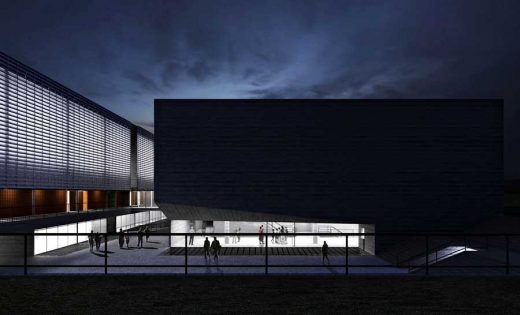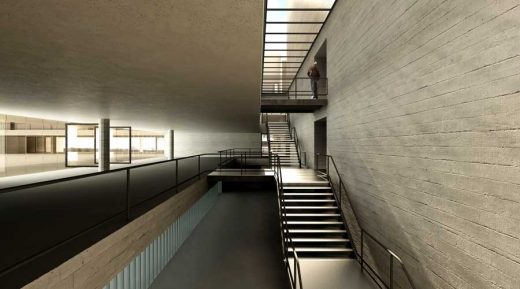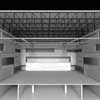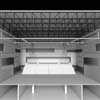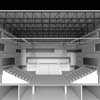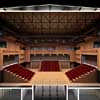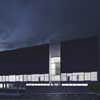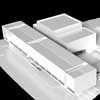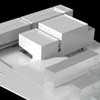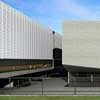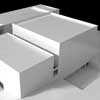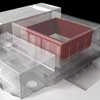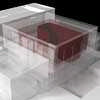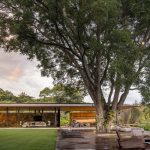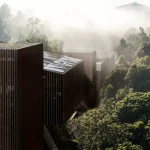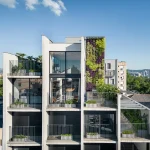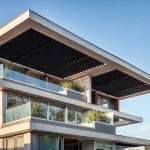Theater Unicamp Campus, Brazil Education Building, Arts Project Design Images
Theater Unicamp Campus
New Education Development in Brazil building design by Una Arquitetos, South America
page updated 30 Jul 2016 ; 3 Feb 2010
Theater Unicamp
Design: Una Arquitetos
“All the things that I speak of are in the city between the sky and the land.”
Ferreira Gullar
Theater Unicamp Campus
The project aim is to integrate the Theater Laboratory and Faculty of Theatrical and Corporal Arts on the Unicamp campus with the Music and Fine Arts schools. The proposal for the project is to give a new unity to the Institute of Art as a whole.
The project site plan defines a linking axis between the diverse buildings – a promenade. The Theater Laboratory occupies a central position on site; at this point the promenade gains the proportions of a square, shifting it to the urban scale. The idea is that of the city inside the campus as a condition for the extension of the schools activities into external space.
The main point of access, on Bertrand Russell Street, is marked by the long, narrow Laboratory building that houses the schools of Theatrical and Corporal Arts. Parking is provided by widening the road that crosses the site – this prevents a build-up of cars on adjacent narrow streets.
A spacious veranda under the long Laboratory building marks the beginning of the axis that connects the original Institute of Art buildings and the separate entrances of Theatrical and Corporal Arts schools.
The schools were developed formally perpendicular to the promenade axis, so as to engage the Theaters square. The programs that require greater height are grouped on the highest level of the Laboratory building, in a metal superstructure with an internal height of 10m.
These spaces, each conceived as a separate shed, have a small opening in the north face, revealing a view to the lake. An opening in the south face allows diffused light and ventilation to cross the spaces.
A raised technical gallery allows for easy of lighting and manipulation of scenery during day-to-day studies. The circulation space is formed by a glazed gallery that also functions as a resting space for pupils and teachers. A covered bridge connects the gallery to the mezzanine in the theater building, where the schools two biggest rooms are.
These spaces can be used for public performances: the hall for large dance groups and the laboratory for circus performance. These rooms also have direct access to the existing parking, allowing entrance of performance equipment at the same level.
The Theater Laboratory building was developed as a school; a building open to the street, where the level of stage corresponds to the level of the square. The veranda entrance is an extension of the canteen.
The waiting hall has natural lighting from above, which reaches the lower level where the workshops are. A metallic staircase cross this hall, its form indicates a continuous passage that extends to the school building.
The public can access the theater from the ground floor and from the mezzanine, via the entrances located at the sides of the theatre. The theatres circulation system allows for the entrance and exit from scene from any side and at any level. Services and scenery access is via Carlos Gomes street.
A pathway which traces along the Theaters Laboratories and the Corporal Arts Schools circulation, and connects to the group of building that form the Institute of Language Studies in the next block.
The side street functions as passage and the square as a meeting point – they are thought of as exterior spaces that are extensions of the theater- scenes of diverse activities such as dance, music, art, theatrical and corporal arts.
The theatre typology adopted for this project is that of multiple use. This option was chosen because it fits the requirements of the functions, characteristics and concept of ‘experimental theater’.
The alteration of each scenes topography and the auditoriums format extends the reach of the theatre space beyond one of a ‘room of spectacles’ and points towards a route in which all of the formal possibilities of the theater can be explored: to learn with the tradition of the Greek theater, to research the history of the Elizabethan theater or to uncover the contemporary vanguards of Total theater.
The physical form of the theatre discloses as much the concepts of the theater explored by the pupils as the ones observed by the public. All brought together in the same space. The possibilities of masking the stage through the technical resources allows for the assembly of a frontal stage (an Italian style ‘traditional theater’ stage), organized clearly by an axle determined by the form of the building and the circulation.
This theatre building is a box which, turned on its back, tries to contain not only the spectacle in the meeting with its public, but also its mirror – revealing, in the interstices of its spaces, the dimensions of the theater.
Theater Laboratory & Faculty of Theatrical and Corporal Arts on the Unicamp campus – Building Information
Authors: una arquitetos – Cristiane Muniz, Fábio Valentim, Fernanda Barbara Fernando Viégas
Collaborators: André Ciampi, Carolina Nobre, Gustavo Pimentel, Márcio Wanderley (competition) Ana Paula de Castro, Carolina Klocker, Gabriela Gurgel, Fabiana Cyon, Jimmy Efrén Liendo Terán, José Carlos Silveira Júnior, Miguel Felipe Muralha, Sílio Almeida
Competition year: 2002
Project year: 2009
Location: campus unicamp, campinas, SP, Brasil
Area of theater : 5.668,73 sqm
Engineering: JCH Gerenciamento de Projetos e Obras
Area of the classes: 5.013,45 sm
Engineering: Prado & Oliveira Engenharia e Construção
Theater Unicamp Campus images / information from Una Arquitetos
Location: São Paulo, Brazil
Brazil Architecture
American Architecture Walking Tours : city walks by e-architect
Brazil Architecture Design – chronological list
São Paulo Architecture Designs – chronological list
Campinas Buildings
Heliópolis Housing
Architect: Mario Biselli e Artur Katchborian Arquitetos
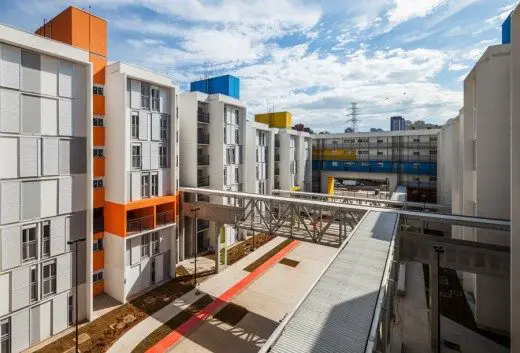
photo : Nelson Kon
New Campinas Homes
Campinas School Building
Design: UNA arquitetos
Campinas School Building
Bridge House, Campinas, Alphaville Private Country Club
Architect: Diego Wisnivesky, ArcLab360
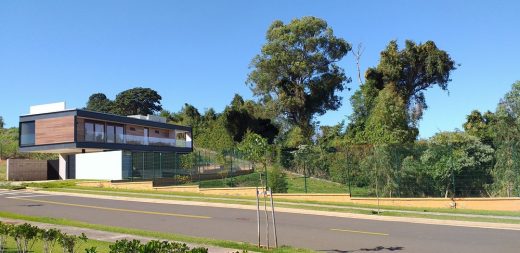
photo : Diego Wisnivesky
Bridge House Campinas
Casa Curitiba
Una Arquitetos
Casa Curitiba
Café Estação Ciência, São Paulo
Una Arquitetos
São Paulo Café
Rodin Museum, Salvador, Bahia
Brasil Arquitetura
Rodin Museum Building
Primetime Nursery School, SP
Marcio Kogan
Brazilian nursery school
Vila del Rey
Vazio S/A Arquitetura e Urbanismo
Vila del Rey
Brazilian Buildings – no images
Comments / photos for the Theater Unicamp Campus Brazilian Architecture page welcome

